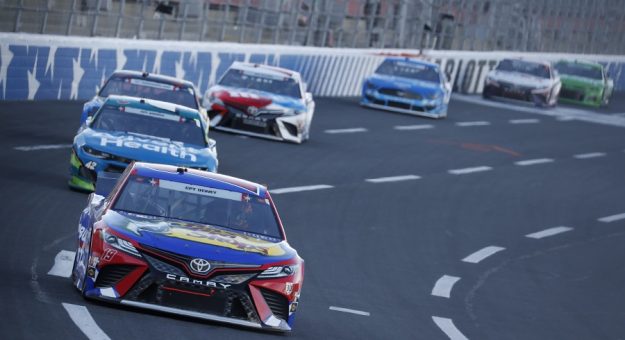Each week this season in the NASCAR Cup Series has been an adventure of sorts.
With the Next Gen car’s inaugural campaign, teams and onlookers have had no idea what a race will look like or how the car will perform until the race weekend arrives.
But that’s somewhat different this weekend.
NASCAR’s longest race has arrived, as the Cup Series sticks in its backyard to compete in the Coca-Cola 600 at Charlotte Motor Speedway.
For the 62nd time, Cup drivers will attempt to make it to the end of 400 laps and 600 miles around the 1.5-mile track.
Unlike the previous 12 points races of the season, this race comes at a track where extensive Next Gen testing has been conducted for the last two years. That’s on top of the races held on the slightly different 1.5-mile tracks so far at Las Vegas Motor Speedway and Kansas Speedway.
Martin Truex Jr. has had a lot of Charlotte success in recent years.
He’s won the 600 twice and claimed the victory in last fall race on the oval in 2017. Since 2016 he’s led 919 laps in nine starts on the Charlotte oval.
What are his hopes for how the Next Gen car will perform in the Crown Jewel race?
“I think it’s important for us personally, because we’ve been so good there and it’s been really good track for us,” Truex told SPEED SPORT at Kansas Speedway. “You like to take advantage of places where you’re good or you feel comfortable and you have confidence. Especially with the new car you’re not always guaranteed any success. But you’d like to be able to have good runs at those because there’s going to be some along the line that you’re not confident in, you don’t have good track record at that maybe they’re not still not going to go good.”
How did Charlotte feel to Truex during the organizational tests in the winter?
“I honestly I felt like when we did all the testing at Charlotte when we went to this (670 HP) rules package I felt really good,” Truex said. “I was really optimistic at that point about how our mile-and-a-half stuff would be, so looking forward to going there and see if we can do that again.”
Kyle Busch is also no stranger to Charlotte Dominance. The winner of the 2018 Coca-Cola 600, Busch led 377 of 400 laps that year and swept every stage.
Busch explained that a successful night in the race requires a driver fighting their natural instincts as a racer.
“You want to race those guys who are around you all of the time,” Busch said in a media release. “You think to yourself, ‘There’s a car in front of me. I want to pass that guy.’ That’s what’s in your blood to do. Sometimes, you’ve just got to back off a little bit and kind of let the race play out. You’ve got to get to the end of the final pit stop. Once you get to the final pit stop, then the race is on.”
And what kind of 600-mile race you experience depends “on what kind of car you have.
“I’ve been in races in the 600-mile race where it’s felt really easy and short, and I’ve been in races where it’s been a long, drawn-out, knock ’em, sock ’em kind of day,” Busch said.
No matter the car, the Coca-Cola 600 isn’t the endurance feat it used to be, whether it’s the toll 600 miles takes on the driver or the car itself.
Kevin Harvick, a two-time winner of the race (2011, ’13), observed that the toll on the driver has changed.
“I don’t think from a physical standpoint it’s noticeable anymore,” Harvick said in a media release. “I think the biggest thing about the Coke 600 is your mental state. When they tell you halfway, it’s like, ‘Oh, my God, that’s only halfway?’ That’s 200 laps, and it feels like you’ve run a whole race and you have the other half of the race still to run. So I think from a mental standpoint, it’s hard to wrap your arms around the lap count and all the things that come with a race being that long.”
Harvick echoed Busch’s sentiment about how a driver must conduct the early portion of the race to be in contention at the end.
“There are so many different areas of transition that you go through in that race because of the fact that the sun goes down after it starts getting hot and slick,” Harvick said. “Then as you transition into the night, you have to have something completely different in your car compared to what you had at the beginning of the race. So there’s a sacrifice you have to make at the beginning of the race to just basically try to keep yourself in a good position. Don’t make any mistakes, stay on the lead lap, and try and put yourself in a good position for the night because that’s when it really counts.”
